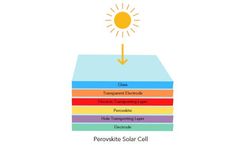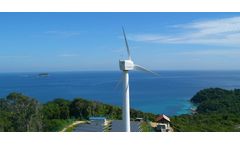Photovoltaic Optimization Articles & Analysis
10 articles found
Introduction of mCP 1,3-Bis(N-carbazolyl)benzene, also known as mCP or 1,3-Bis(triphenylbenzene), is an organic compound consisting of a central benzene ring connected to two carbazolyl groups. It is commonly used as a hole transporting material in organic light-emitting diodes (OLEDs) due to its high thermal stability and excellent charge transport properties. The carbazolyl groups in the ...
1. Problem Statement Ensuring optimal yield of photovoltaic power plants requires optimization of maintenance activities such as cleaning. ...
Central to these advancements is the role of Secondary Ion Mass Spectrometry (SIMS) in pushing the boundaries of photovoltaic layer analysis and ...
Photovoltaic efficiency improvements are key to improving the performance of solar cells.The photovoltaic effect (the conversion of light to electricity) was discovered in 1839 by Edmond Becquerel, and is the foundation of solar cells. Since the 1950’s the efficiency of solar cells have increased from 4% in the 1950’s to over 20% today, and research is ongoing to further improve photovoltaic ...
Optimal Power Solutions are highly specialised in developing and applying new technologies for renewable energy systems, particularly in remote areas. OPS provided the integrated power control system and project implementation for Perhentian, including the co-ordination and optimization of photovoltaic arrays, wind turbines, battery banks and ...
The National Nanotechnology Initiative (NNI) published on March 11, 2015, its supplement to the President’s 2016 budget submitted to Congress. NNI states that the supplement serves as the NNI annual report. According to the annual report, in 2014, federal agencies invested $1.57 billion in nanotechnology-related activities. The President’s 2016 request calls for an investment of $1.50 ...
The CuInS 2 and CdS quantum dots co-sensitised solar cells are successfully fabricated to improve the photovoltaic performance. The CuInS 2 quantum dots are adsorbed on the surface of TiO 2 nanoparticles by assembly linking technique, and then the CdS quantum dots are deposited by successive ionic layer absorption and reaction technique. The absorption intensity is obviously enhanced and ...
Consequently, the procedure is used to simulate optimal modes of operation that continuously control the number of active (on-grid) inverters in a way that yields best possible conversion efficiency. The evaluation procedure is applied theoretically to the 8.8 kWp and 36 kWp systems to determine their relevant optimal modes of operation. In order to validate the ...
This article presents the methodology for calculation of the optimum size of a Photovoltaic (PV) system. Long-term data of PV radiation were used to calculate the average power generated by a PV generator for every hour of a typical day in a month. ...
The aim of this research and development project is to develop improved solar photovoltaic linear concentrators that are commercially competitive in a wide variety of markets including reducing the cost and increasing efficiency associated with this technology. The project will be led by Australian cooperation with India. The key objective of this project is to resolve the remaining barriers to ...







